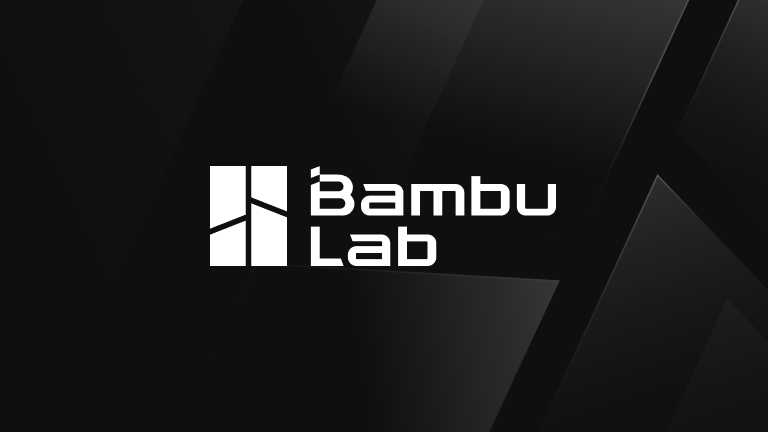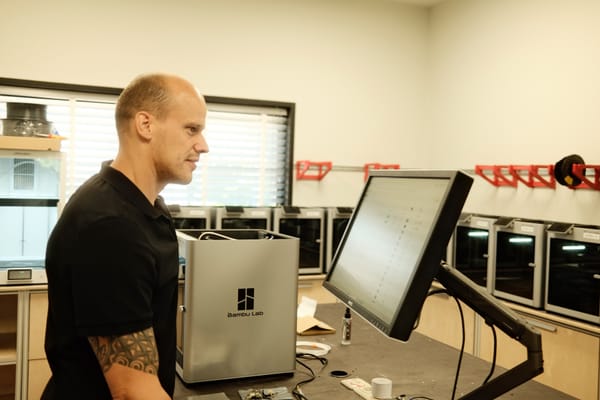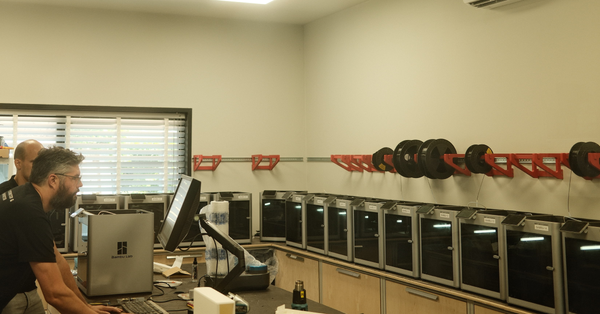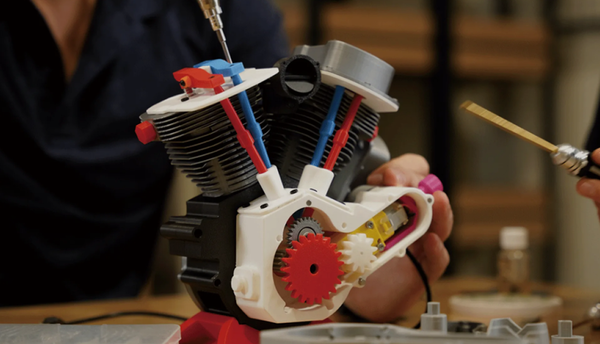Quality Assurance and Operations Update

We apologize for the lack of updates, and we fully understand that one is overdue. In the background, a lot has been going on to step up our customer support workforce, but we still kept our ears to the ground and took note of all your feedback shared on social media platforms and through customer support tickets.
Concerns have been raised related to the production quality of our printers, and we would like to take some time to address them in as much detail as we can so you can put your mind at rest.
It's important for us to stress that the number of printers exhibiting some of the issues mentioned below is very small when compared to the volume of printers already in our customer's hands, but we want to make sure that we are transparent about the issues encountered.
Heatbed flatness concerns
There are some concerns related to the heatbed flatness for the X1 and P1P. Due to the manufacturing process of the heatbed, it is impossible to have a perfectly flat bed. We have Auto Bed Leveling in place to compensate for the uneven bed surface.
The heatbed component has its own testing procedure, and the printer has also been subjected to strict printing tests before leaving the factory.
We understand that a perfectly flat bed is what everyone desires, and we are working on the supply chain, manufacturing process, QA, and logistics to improve the flatness of the bed and provide better flatness results.
We do notice that some customers received printers with a bed with large deviations that seriously affect the print quality and we apologize for that. If you encounter problems that are potentially related to bed flatness, please file a support ticket with pictures showing the issues encountered, and the log file. Our customer support team will assist you with troubleshooting the issue and provide a solution.
Z-axis related issues
Customers have reported Z-axis issues that might generate print quality problems. We investigated all the reported Z-axis problems and most of them are caused by damage during shipment.
The printer passed a strict Z-axis verticality test before leaving the factory, but we noticed that very few machines had Z-axis structural bending after long-distance or violent transportation, and even fewer machines have Z-axis bearings damaged. We will modify the printer packing to increase drop resistance and extend the original bearing. We have also adjusted the mold of the printer base to ensure that it is not damaged during delivery.
If you encounter problems that are potentially related to the Z axis, please file a support ticket so our customer support team will assist you to troubleshoot the problem and provide solutions.
Inconsistent extrusion artifacts
Customers are testing the performance of our extruder using Mihai's Designs model, and after that test, they found wood-grain artifacts on the external wall of the print. This issue is present with most direct-drive extruders on the market to some degree, and our R&D team is working on finding solutions to mitigate this problem.
Unfortunately, we are not sure if this artifact can be eliminated completely, and Mihai's extruder test model is a model that shows this artifact much more pronounced compared to real-life usage where the results can be less visible.
If you encounter extrusion artifacts or issues, opening a support ticket with detailed information about print quality, the .3mf file used for printing, and pictures of the results can help our team provide you with more information about how to mitigate this issue and get better print quality results.
MC Board Fan noise
The early version of the MC board fan used oil bearing construction; however, the bearing grease can evaporate over time, generating friction between the shaft and the bearing, resulting in abnormal noise. There was a batch of fans with less-than-ideal quality which have been causing noise in a very short period and we apologize for that.
In order to solve the issue of rattling sound, we have introduced new MC board fans with a ball-bearing structure to replace fans with oil bearings. The updated model of the MC board fan is also stocked in our web store.
If you find that the MC board fan of the printer makes abnormal noise, please open a technical ticket and the after-sales technical support will help you solve the problem.
Carbon Rods and movement
The X-axis kinematic pair is a sliding friction pair composed of carbon fiber rods and graphite sleeves. There are certain requirements for the parallelism of the full-carbon rail and the cleanliness of the carbon rail surface. Our production will ensure parallelism through the fixture.
However, the cleanliness of the carbon rods is greatly affected by the printing environment, especially if you print a lot of ABS or ASA filaments. Volatile substances will accumulate in the printer and on the carbon rods. Since movement resistance would be significantly increased and printing accuracy will be affected (the cylinder you print may become an ellipse due to debris accumulation), the carbon rods and the inside of the bearings should be manually cleaned with IPA according to our detailed wiki article.
The system will also remind you to clean the carbon rods on a routine basis depending on the type and frequency of the filament you print.
Please also note that we do not recommend adding any lubrication to the carbon rods as they are not intended to be lubricated with grease or oil and adding lubricant can generate motion issues.
The printer trips the circuit breaker
The printer's safety in all operating settings meets the national standard GB4341 and the European IEC62368 standard. To achieve fast printing and heating, the printer's heating power is relatively large, and so is the leakage current. X1 and P1P have a similar leakage current as a typical washing machine.
This is especially noticeable when many printers use an AC power supply of greater than 200V to print high-temperature filaments. Please choose a circuit breaker with sufficient leakage current to avoid this problem.
Slight tool head wobble
The tool head has been mounted on the X-axis assembly. Which is held together by a sliding friction pair made up of carbon fiber rods and a graphite sleeve. To ensure smooth movement, the sliding friction pair must have a specific fit clearance.
The manufacturing process does not permit a zero-tolerance gap, causing the fit gap to slightly fluctuate within a given range.
Certain tool heads can shake slightly after assembly, but this is normal and will not affect printing quality. If you still encounter print quality issues, please open a ticket for this and our customer support team will provide assistance and a solution if required.
Lidar Calibration with Textured Plate
We can see our customers performing the extrusion calibration process on the Textured PEI Plate, and this can lead to badly calibrated values being used during printing, and in some cases, adhesion problems. We would like to remind everyone that calibrating the extrusion on the Textured PEI Plate is to be avoided.
A solution to this problem is to calibrate a specific filament on a smooth print surface like the Cool Plate or the Engineering Plate, depending on the material. After the calibration is complete, the value is stored in the printer's memory allowing you to start a print with the Textured Plate and the saved calibrated value. After a reboot, the value is reset to a specified default value, so you might need to repeat the process if the filament is changed or the printer is restarted.
This information applies to the X1 line and does not apply to the P1P, where the calibration is done manually.
Heatbed adhesion
Our Customer Support team receives tickets related to heatbed adhesion issues, sometimes related to bad adhesion and in other situations, the adhesion is too high. Most of the problems are generated by a contaminated plate (oils, grease, plate not cleaned correctly) and in some cases, there are slight manufacturing defects.
We strongly recommend using warm water and detergent for cleaning our print surfaces, as this works very well in cleaning any contaminants from the surface. In some cases, IPA cannot properly degrease the print surface and instead of cleaning it, oils or grease can be spread on the entire plate causing further issues.
For the Cool Plate and the High-Temperature PEI plate, we recommend applying a thin coat of glue stick over the entire printing surface to ensure that the adhesion is not too strong. This coat of glue acts as a release agent, preventing damage to the plate, and ensuring a longer-lasting lifetime of the product.
A liquid glue adhesion product was launched recently, which has been specially formulated for easy application and little residue, so we strongly recommend it.
As usual, please check the detailed information for our recommendations listed on every plate's product description to ensure that it is correctly used. And if you encounter quality issues with our plates, opening a support ticket will allow our team to provide you with a solution.
End notes
We would like to thank everyone for their continued support in further improving our printers and apologize to customers that have received less-than-perfect machines. We will do our best to solve any of your issues in a short manner.
Our R&D team is working hard to improve the software quality (Firmware, Bambu Studio, Bambu Handy) and our Customer Support team is also improving, increasing the number of agents to shorten the time needed to provide support.
We stand behind our products, and our focus is to deliver an excellent experience in all aspects: Software, Hardware, and Customer Support.



